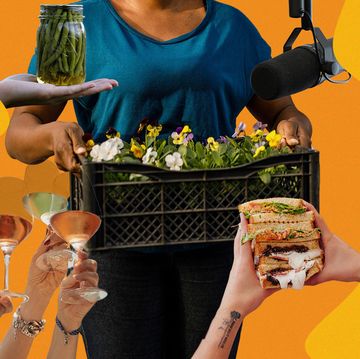As one of the most important Jewish holidays, Passover holds a special place in the hearts of Jewish families, who gather every spring for the ritual feast of seder. The holiday celebrates the Jews’ liberation from Egyptian slavery and the sparing, or “passing over,” of their firstborn sons when God sought to punish the land of Egypt.
The customs of Passover, which takes place this year from the evening of April 5 through the evening of April 13, include eating symbolic foods, sharing the story of Passover, and drinking four cups of wine to symbolize the four Biblical phrases about God liberating the Jews.
After attending so many seders that are carbon copies of years past, guests might feel that Passover begins to resemble the Bill Murray movie version of Groundhog Day. Families may find themselves stuck in a rut, seeking a way to uphold tradition while mixing it up a bit. Fortunately, this is easier to achieve than you might believe.
“I believe that Torah is eternal and should not change with the times,” says Chanie Apfelbaum, author of Totally Kosher: Tradition With a Twist! 150+ Recipes for the Holidays and Every Day: A Cookbook and the blogger behind Busy in Brooklyn. “I do think that there are ways to honor our traditions the way they were celebrated for generations while still modernizing our Passover table.”
Shannon Sarna, author of Modern Jewish Comfort Food: 100 Fresh Recipes for Classic Dishes From Kugel to Kreplach and editor of The Nosher, agrees. “It’s crucial to honor tradition and remember where we came from,” she says. “Tradition and ritual sustain us, but if traditions don’t also modernize, they will lose their relevancy.”
Sarna has observed firsthand that many Jews get so caught up in the strict rules of kashrut, or keeping kosher, that it detracts from being present for the holiday and connecting with the message of the story.
“I try to do less — in some sense — and not fixate on ancient rules,” Sarna says, “but rather zoom out and focus on the bigger picture and message so that I can enjoy the spirit of the holiday and time with my family more.” Here is how the experts suggest embracing the traditions of Passover while updating the time-honored customs.
Rethink traditional recipes
People who celebrate Passover regularly are probably used to the same dishes: matzo ball soup, gefilte fish, potato or noodle kugel, and brisket. Why not put a spin on these traditional recipes for a refreshing new experience? When prepared with the right ingredients, alternatives can still adhere to the holiday rule of unleavened bread and can be made kosher.
For example, Apfelbaum recalls her family preparing gefilte fish from scratch every Passover, which she describes as a “big project.” Today, she streamlines the dish by creating fried gefilte fish patties with fresh herbs and spices, and she’s even prepared a curried version. “Gefilte fish can be really intimidating for people who didn’t grow up eating it,” she explains. “It’s beige and mushy, so sprucing it up with added flavors and frying it into patties makes it more appealing.”
Matzo, the unleavened flatbread Passover staple, lends itself to many interpretations, Apfelbaum says, from savory matzo brei (matzo fried with eggs) to matzo e pepe, a spin on the Italian dish cacio e pepe, only with matzo, lots of cheese, and pepper.
Sarna enjoys incorporating matzo into sweeter dishes, such as matzo toffee (matzo covered in butter, sugar, and melted chocolate). “You can top with just chocolate or add sprinkles, chopped nuts, dried fruit, or coconut,” she says. “It’s a dessert that can be catered for different people’s tastes.” Sarna has also used matzo as the key ingredient in tiramisu and birthday cakes.
For many Jewish families, it’s not Passover without brisket on the table, but there’s no custom that says the dish must be included, Sarna says. “Sometimes, we serve braised lamb instead of brisket or schnitzel made with matzo meal instead of breadcrumbs as a kid-friendly main dish,” she suggests. Sarna adds that you can substitute jackfruit for brisket as a vegetarian alternative.
Personalize the seder plate
An important part of Passover is the seder plate, which holds symbolic foods that tell the story of Exodus, the Jews’ liberation from Egypt, including bitter herbs; egg; shank bone; charoset, a mixture of apples, nuts, wine, and cinnamon; matzo; and vegetables like parsley or celery.
Apfelbaum believes the seder plate is one element of Passover that shouldn’t be changed. “I love putting my own spins on tradition, but as my bubbe taught me, some traditions should be left as they are — and one of those is the seder plate,” she says. “Each item on the seder plate is symbolic. There is a particular order in which they are eaten, and special blessings that are made, so I wouldn’t change a thing.”
However, Sarna has observed that some families personalize their seder plates to better represent who they are as people. For example, she says a beet could replace the shank bone for vegetarians; an orange can be added to represent women and LGBTQ+ people; fair-trade coffee or chocolate could be incorporated as a reminder of forced child labor; and olives might be added to represent hope for peace between Israelis and Palestinians.
Make the Haggadah reading more fun
A key part of Passover seder is reciting the story of Exodus from the Haggadah book. However, it can take hours for some families to read the full Haggadah, and some might see this as a low point of the evening. By making it more interactive, everyone from kids to adults is more likely to pay attention, learn, and enjoy.
Sarna notes that today there are many versions of the Haggadah available that are shorter or more family-friendly. “In recent years, we have focused on creating conversations for our children, asking them to explain the parts of the holiday they know and understand, and making sure we sing as many songs as we can,” she says. “Asking questions is an important part of the Passover seder, and we try to make that a cornerstone of our seder experience.”
Since the “overriding purpose of the Passover seder and its many rituals is to teach our children the story of our heritage,” Apfelbaum says, she uses masks, toy frogs, finger puppets, and other props to illustrate the story as it’s being read. “It keeps the kids interested,” she explains, “and involved throughout the long seder.”
Invite new guests
As the wife of a Jewish man, I’ve seen firsthand how having a non-Jewish person attend Passover excites regular guests. They seem to genuinely enjoy explaining their customs to someone who is interested and eager to learn. Why not invite a non-Jewish person to Passover seder? It might make Jewish friends and family appreciate their own traditions even more when they’re seeing them through the eyes of a newcomer.
Apfelbaum agrees. While she was growing up, her mother regularly invited two friends who were Jewish but not religious to Passover. “As kids, we were so excited to teach them about all of our traditions,” she recalls. “Despite them coming back year after year, they always received it with the same excitement as if they were hearing it for the first time.”
Sarna believes the more, the merrier on Passover, noting that even the Haggadah states, “Let all who are hungry come and eat.” She says, “While that is a call to help those who are in need, it’s also about welcoming people at our table. For our family and many families, having the chance to welcome anyone at the Passover meal makes the holiday richer.”
Ultimately, the themes of liberation in the Passover story are universal. Sarna says the holiday emphasizes humanity’s obligation to fight for freedom and stand up to injustice. “The more you know and understand about someone else and their culture, the less you will treat them as others,” she says. “As we know others, we will feel compelled to stand with them in times of need and vice versa.”
Chelsea Greenwood is a lifestyle writer whose work has been featured in InStyle, Teen Vogue, Self, Racked, Vulture, Brit + Co, SheKnows, and Vice. Follow her on Twitter @cpgreenwood.
Get Shondaland directly in your inbox: SUBSCRIBE TODAY

















